Did you know? |
In 1956 Hewlett-Packard (HP) introduced its first oscilloscope, the HP 130A with 300 kHz bandwidth. Read more...
Latest Oscilloscope News |
Oscopes KnowledgeBase is growing and includes now also Videos
19 June 2020 - The new OScilloscope KnowledeBase of OScopes.info, a whitepaper and application note library focusing on oscilloscopes, is growing and includes meanwhile more than 50 whitepapers and application notes. In addition it was enhanced to include also YouTube videos and webinars.
Pico Technology extends range of PC-based Mixed Signal Oscilloscopes
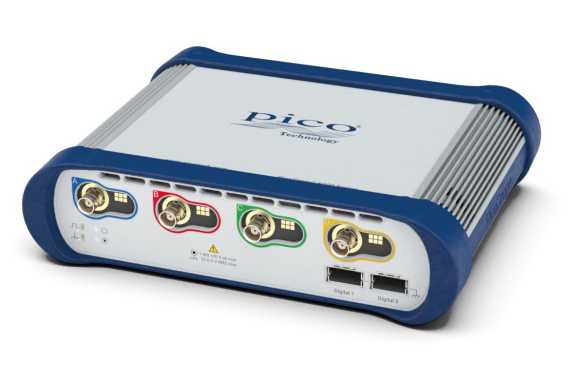 26 May 2020 - Pico Technology announced three new 4-channel models of its PicoScope 6000E Series oscilloscopes, each of which can be configured with 16 optional digital channels. With bandwidths of 300 or 500 MHz, 8-bit or 8/10/12-bit flexible resolution and up to 4 GS deep capture memory, these products enhance the existing PicoScope 6000E portfolio, adding to the 8-channel models that were introduced earlier in the year.
26 May 2020 - Pico Technology announced three new 4-channel models of its PicoScope 6000E Series oscilloscopes, each of which can be configured with 16 optional digital channels. With bandwidths of 300 or 500 MHz, 8-bit or 8/10/12-bit flexible resolution and up to 4 GS deep capture memory, these products enhance the existing PicoScope 6000E portfolio, adding to the 8-channel models that were introduced earlier in the year.
Keysight launched 6 GHz Mixed Signal Oscilloscopes with up to 8 Channels
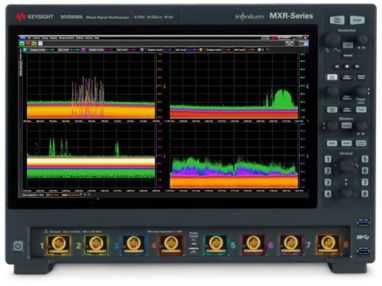 14 May 2020 - Keysight Technologies announced the first oscilloscope with 8 analog channels at 6 GHz and 16 simultaneous digital channels, enabling customers to reduce test bench and workflow complexity to achieve higher performance as well as accurate and repeatable multi-channel measurements in a single instrument.
14 May 2020 - Keysight Technologies announced the first oscilloscope with 8 analog channels at 6 GHz and 16 simultaneous digital channels, enabling customers to reduce test bench and workflow complexity to achieve higher performance as well as accurate and repeatable multi-channel measurements in a single instrument.
New: OScopes now includes an Application Note and Whitepaper Library
13 May 2020 - To provide our readers additional information about how to use oscilloscopes and how to solve their measurement challenges we enhanced OScopes with the new "KnowledgeBase" Application Note and Whitepaper Library. It includes a full text search and selection functions to fast and easy identify articles containing the information our readers are looking for.
Multi-Channel Probe Positioning System
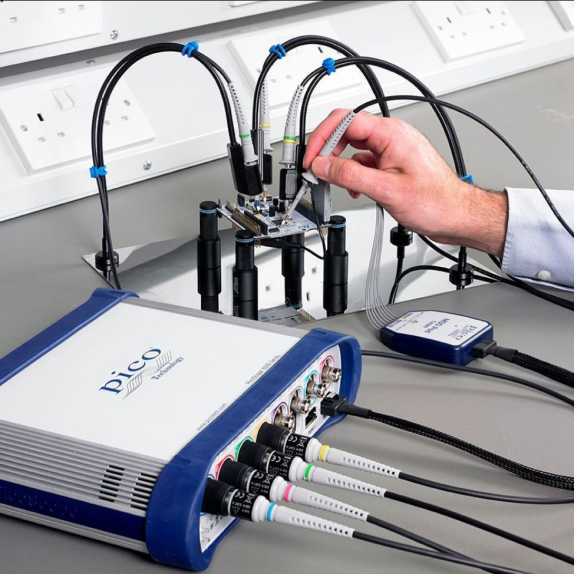 12 May 2020 - Oscilloscopes with more than two channels present humans with a common problem: none of us have enough hands to hold more than two oscilloscope probes in place. This is especially an issue when using an 8-channel oscilloscope such as the new PicoScope 6800E devices, so it was particularly important for Pico Technology to address it.
12 May 2020 - Oscilloscopes with more than two channels present humans with a common problem: none of us have enough hands to hold more than two oscilloscope probes in place. This is especially an issue when using an 8-channel oscilloscope such as the new PicoScope 6800E devices, so it was particularly important for Pico Technology to address it.
Tektronix extends Performance of TBS2000 Digital Storage Oscilloscopes
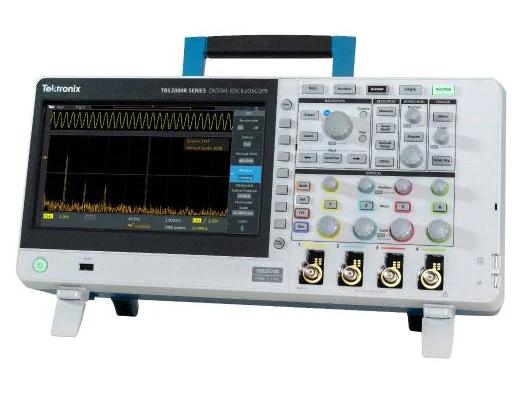 04 May 2020 - Tektronixy announced the new TBS2000B Series of Digital Storage Oscilloscopes that was developed to meet the performance, usability and affordability needs of both engineers and educators. The TBS2000B scopes extend the performance of the TBS2000 portfolio to 200 MHz with 2GS/s maximum sample rate.
04 May 2020 - Tektronixy announced the new TBS2000B Series of Digital Storage Oscilloscopes that was developed to meet the performance, usability and affordability needs of both engineers and educators. The TBS2000B scopes extend the performance of the TBS2000 portfolio to 200 MHz with 2GS/s maximum sample rate.
GW Instek introduced new Entry-Level Digital Oscilloscope
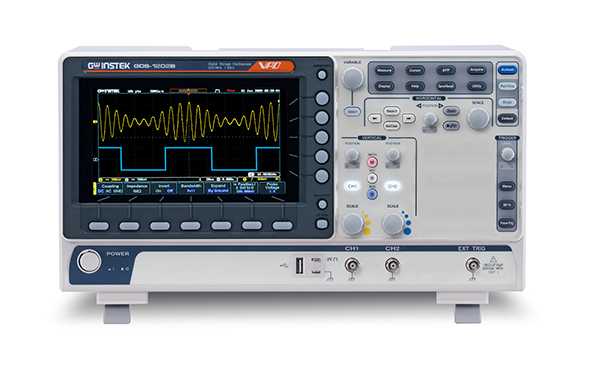 24 April 2020 - GW Instek added the GDS-1202B to its GDS-1000B series of digital oscilloscopes, which included so far 100/70/50MHz bandwidth options. The GDS-1202B is a 200MHz dual channel model intended to the educational market and users with basic test requirements.
24 April 2020 - GW Instek added the GDS-1202B to its GDS-1000B series of digital oscilloscopes, which included so far 100/70/50MHz bandwidth options. The GDS-1202B is a 200MHz dual channel model intended to the educational market and users with basic test requirements.
Oscilloscope Basics |
A Comparison between Oscilloscopes and Spectrum Analyzers
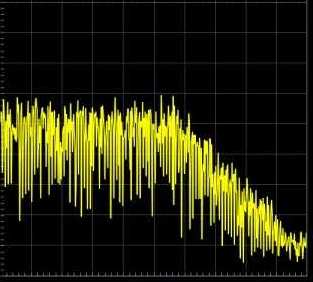 Whether it is for a land survey searching for minerals on Earth, or for a space exploration in search of alien life forms, the analysis of any signal boils down to looking at its time and frequency information. While an oscilloscope displays a signal with respect to time, a spectrum analyzer shows it with respect to frequency. Both of these tools are very important in any signal analysis application. This article explains the difference between oscilloscope and spectrum analyzer using examples.
Whether it is for a land survey searching for minerals on Earth, or for a space exploration in search of alien life forms, the analysis of any signal boils down to looking at its time and frequency information. While an oscilloscope displays a signal with respect to time, a spectrum analyzer shows it with respect to frequency. Both of these tools are very important in any signal analysis application. This article explains the difference between oscilloscope and spectrum analyzer using examples.
Oscilloscope Background |
A simple method to verify the bandwidth of your probe
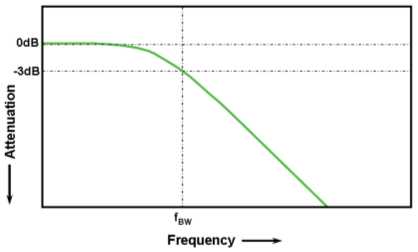 In oscilloscopes or oscilloscope probes, bandwidth is a measure of the width of a range of frequencies measured in Hertz. Specifically, bandwidth is specified as the frequency at which a sinusoidal input signal is attenuated to 70.7 percent of its original amplitude, also known as the -3 dB point. Most oscilloscope companies design the scope/probe response to be as flat as possible throughout its specified frequency range, and most customers simply rely on the specified bandwidth of the oscilloscope or oscilloscope probes, wondering if they are indeed getting the bandwidth performance at the probe tip. Now you can use these step-by-step instructions to simply measure and verify the bandwidth of your probe with an oscilloscope you may already have.
In oscilloscopes or oscilloscope probes, bandwidth is a measure of the width of a range of frequencies measured in Hertz. Specifically, bandwidth is specified as the frequency at which a sinusoidal input signal is attenuated to 70.7 percent of its original amplitude, also known as the -3 dB point. Most oscilloscope companies design the scope/probe response to be as flat as possible throughout its specified frequency range, and most customers simply rely on the specified bandwidth of the oscilloscope or oscilloscope probes, wondering if they are indeed getting the bandwidth performance at the probe tip. Now you can use these step-by-step instructions to simply measure and verify the bandwidth of your probe with an oscilloscope you may already have.

 How to resolve AdBlock issue?
How to resolve AdBlock issue?